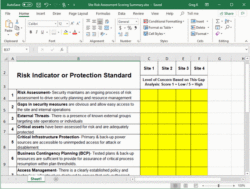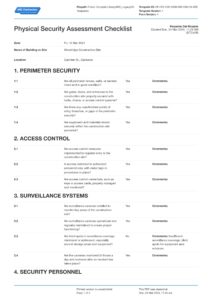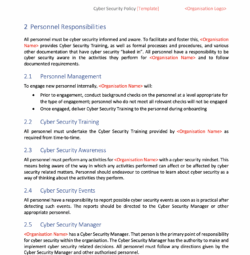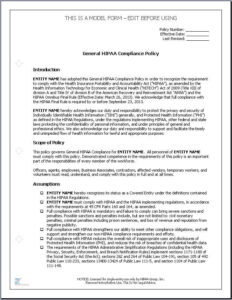In today’s interconnected world, safeguarding your organization’s assets, data, and reputation is no longer an option—it’s an absolute necessity. The digital landscape is constantly evolving, bringing with it a myriad of potential threats, from sophisticated cyberattacks and data breaches to internal vulnerabilities that can go unnoticed. Without a clear understanding of where your weaknesses lie, you’re essentially navigating a minefield blindfolded, leaving your operations exposed to unforeseen disruptions and potentially devastating consequences.
Identifying and assessing these risks can feel like a daunting task, especially for organizations of any size. It requires a systematic approach, one that ensures no stone is left unturned and that critical areas are thoroughly examined. This is where a structured tool becomes invaluable. Instead of guessing or relying on ad-hoc checks, a methodical framework allows you to pinpoint potential pitfalls, evaluate their impact, and formulate effective mitigation strategies, transforming a reactive approach into a proactive security stance.
Why a Risk Survey Template is Your Security Shield
Understanding the full spectrum of security threats isn’t just about patching software or setting up firewalls. It’s a holistic endeavor that involves looking at people, processes, and technology. A well-designed risk survey template serves as your compass in this complex terrain, guiding you through a comprehensive self-assessment that reveals vulnerabilities you might not even be aware of. It shifts the focus from merely reacting to incidents to proactively identifying and addressing potential issues before they escalate into major problems.
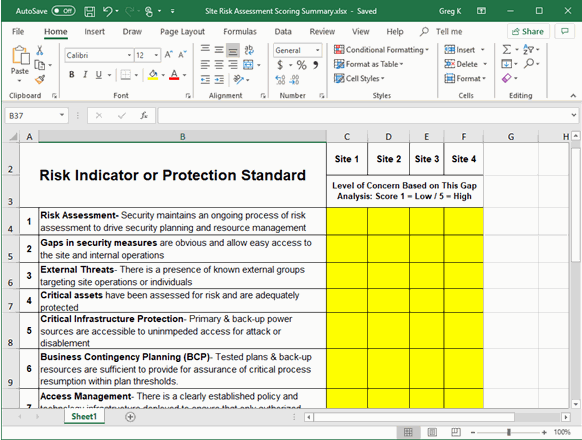
The power of a template lies in its consistency and structure. It ensures that every critical area of your organization’s security posture is examined systematically, preventing oversights that can lead to significant breaches. This structured approach helps in standardizing the collection of information across different departments or teams, providing a unified view of your risk landscape. It’s not just about technical risks; it also encompasses human elements, operational procedures, and third-party dependencies that often form weak links in an otherwise robust security chain.
By leveraging a dedicated risk survey template for security, organizations gain several tangible benefits that contribute to a stronger, more resilient defense. These advantages go beyond simple compliance, fostering a culture of security awareness and continuous improvement.
Uncovering Hidden Vulnerabilities
- Comprehensive Assessment A template ensures that all relevant aspects of your security environment, from IT infrastructure to physical access controls and employee practices, are thoroughly reviewed.
- Prioritization of Threats It helps in categorizing and ranking risks based on their likelihood and potential impact, allowing you to focus resources where they are most needed.
- Resource Allocation With a clear understanding of high-priority risks, you can allocate your security budget and personnel more effectively, maximizing your return on investment in security measures.
- Compliance Adherence Many regulatory frameworks require regular risk assessments. A template provides a structured way to gather the necessary evidence for compliance audits.
- Improved Communication By involving various stakeholders in the survey process, it fosters better understanding and communication about security responsibilities across the organization.
Ultimately, a robust risk survey template empowers organizations to move beyond guesswork and into a realm of informed decision-making. It transforms abstract fears into actionable insights, providing a clear roadmap for strengthening your defenses and protecting your critical assets from an ever-growing array of threats.
Crafting Your Effective Risk Survey
Creating an effective risk survey isn’t just about listing questions; it’s about designing a tool that elicits meaningful responses and provides actionable intelligence. The best surveys are clear, comprehensive, and tailored to your organization’s unique operational environment. They should cover a broad spectrum of potential risk areas, ensuring that both obvious and subtle vulnerabilities are brought to light.
When developing your survey, consider segmenting questions into logical categories. This not only makes the survey easier to complete but also helps in organizing the collected data for analysis. Here are some key areas that should typically be covered in any robust security risk survey:
- Technical Security Risks Questions related to network architecture, server configurations, endpoint security, software vulnerabilities, data encryption, and incident response capabilities.
- Human Element Risks Assessments of employee security awareness, training programs, phishing susceptibility, insider threat potential, and access management policies.
- Process and Policy Risks Evaluations of existing security policies, procedures for data handling, incident management workflows, change management protocols, and compliance frameworks.
- Physical Security Risks Inquiries about building access controls, surveillance systems, environmental controls (e.g., fire suppression, climate), and physical asset protection.
- Third-Party and Vendor Risks Questions concerning the security posture of third-party vendors, cloud service providers, and supply chain partners who have access to your data or systems.
For each question, consider using a standardized rating scale for likelihood and impact, such as a 1-5 scale, to allow for quantitative analysis. This consistency is crucial for comparing different risks and prioritizing mitigation efforts. Ensure the language used is unambiguous and easy for all participants, regardless of their technical background, to understand and respond to accurately. Providing examples or brief explanations for complex terms can also be beneficial.
Once the survey is designed, think about the most effective way to distribute it and collect responses. Whether through internal platforms, dedicated survey tools, or structured interviews, the goal is to gather honest and insightful information. Remember, the effective use of a risk survey template for security is not just about collecting data; the real value comes from the subsequent analysis of the responses and the development of targeted mitigation strategies based on the identified risks.
Understanding and mitigating security risks is an ongoing journey, not a destination. By systematically assessing your security posture, you empower your organization to proactively defend against an ever-evolving threat landscape. A well-constructed risk survey template for security serves as the cornerstone of this continuous process, providing the insights needed to make informed decisions and build a truly resilient security framework.
Embracing a structured approach to risk assessment allows your organization to move beyond reactive problem-solving. It cultivates a robust defense mechanism, fostering a culture where security is integrated into every layer of operation, ensuring that your valuable assets remain protected and your business continuity is maintained, even in the face of emerging threats.
